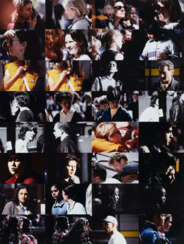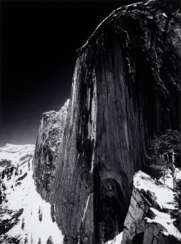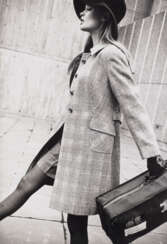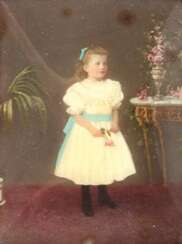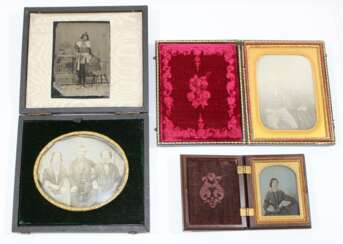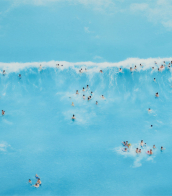street photography

Beat Streuli is a Swiss visual artist who works with photo and video based media.
His photographs, videos and window installations have been exhibited in galleries and museums internationally. Permanent installations of his work include those at the Lufthansa Aviation Center, Frankfurt Airport, Germany, the ETH University, Zurich, Switzerland, the Style Company Building, Osaka, Japan, and the immigration hall of Dallas Fort Worth International Airport, Texas, USA.
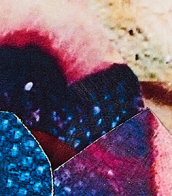

Arthur (Usher) Fellig, known by his pseudonym Weegee, was a photographer and photojournalist, known for his stark black and white street photography in New York City.
Weegee worked in Manhattan's Lower East Side as a press photographer during the 1930s and 1940s and developed his signature style by following the city's emergency services and documenting their activity. Much of his work depicted unflinchingly realistic scenes of urban life, crime, injury and death. Weegee published photographic books and also worked in cinema, initially making his own short films and later collaborating with film directors such as Jack Donohue and Stanley Kubrick.
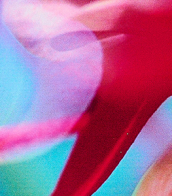

Dennis Stock was an American photographer known for his iconic images of celebrities and musicians, as well as his extensive coverage of social issues and cultural events.
Stock began his career as a freelance photographer in the 1950s and was soon hired by the Magnum Photos agency, where he worked alongside other influential photographers such as Robert Capa and Henri Cartier-Bresson. He quickly became known for his photographs of jazz musicians, including Miles Davis, Louis Armstrong, and Duke Ellington.
In 1955, Stock received an assignment from LIFE magazine to photograph a young actor named James Dean. The resulting images, including a now-famous photograph of Dean walking through Times Square in the rain, became some of the most iconic photographs of the 20th century.
Stock continued to photograph celebrities and cultural figures throughout his career, including Audrey Hepburn, Marlon Brando, and Andy Warhol. He also covered major events such as the civil rights movement, the Vietnam War, and the Woodstock music festival.
Stock's work has been exhibited in galleries and museums around the world and has been the subject of several books and documentaries. He was known for his ability to capture intimate moments and his talent for revealing the personalities and emotions of his subjects through his photographs.



Ansel Easton Adams was an American photographer and environmentalist, celebrated for his black-and-white images of the American West, particularly Yosemite National Park. His profound connection with nature was not only the subject of his art but also the essence of his environmental advocacy, earning him a revered place in both the art and conservation worlds.
Ansel Adams' early exposure to the beauty of nature and a supportive family environment nurtured his dual interests in music and photography. His photographic journey began with a simple Kodak Box Brownie camera, which he used during his early visits to Yosemite, a place that would become the central theme of his life's work. Ansel Adams' dedication to photography and the environment was interwoven, as he utilized his art to advocate for the conservation of America's natural landscapes.
In the 1930s, Adams co-founded Group f/64, advocating for photographic purity and sharpness of focus, principles that would define his work. His role in establishing the photography department at the Museum of Modern Art in New York underscored his commitment to elevating photography as a respected art form. Ansel Adams' work has been exhibited in prestigious institutions such as the Smithsonian American Art Museum and MoMA, showcasing his contributions to American art and environmentalism.
For collectors and art experts, Ansel Adams' legacy transcends his iconic images; it lies in his ability to merge aesthetic excellence with a passionate message of environmental stewardship. His photographs not only capture the grandeur of landscapes but also serve as a timeless call to preserve the natural world.
To delve deeper into the world of Ansel Easton Adams and stay updated on new product sales and auction events related to his work, signing up for updates is a step toward embracing the heritage of a pivotal figure in art and environmental advocacy.
Join our community of art and antique enthusiasts to honor Adams' vision and ensure his message continues to inspire future generations.


Larry Sultan was an American photographer and artist. He is known for his innovative and evocative photographic work that often explores the boundaries between documentary photography and staged narrative.
Sultan's work is characterized by his interest in the relationships between people and their environments, and he often incorporates everyday settings and objects into his photographs. He is perhaps best known for his seminal work, "Pictures from Home," which is a deeply personal exploration of his own family and their suburban life in Southern California.
Sultan's work has been exhibited in galleries and museums around the world, and he has received numerous awards and accolades for his contributions to the field of photography. He was also a highly respected teacher, and he taught photography at the California College of the Arts and other institutions for many years.
Sultan's legacy as an artist and photographer continues to influence new generations of artists. His innovative techniques and unique approach to photography have had a significant impact on the field of documentary photography, and his work remains an important contribution to the history of photography.


Arthur (Usher) Fellig, known by his pseudonym Weegee, was a photographer and photojournalist, known for his stark black and white street photography in New York City.
Weegee worked in Manhattan's Lower East Side as a press photographer during the 1930s and 1940s and developed his signature style by following the city's emergency services and documenting their activity. Much of his work depicted unflinchingly realistic scenes of urban life, crime, injury and death. Weegee published photographic books and also worked in cinema, initially making his own short films and later collaborating with film directors such as Jack Donohue and Stanley Kubrick.




Norman Parkinson was a renowned British photographer who is considered one of the most influential fashion photographers of the 20th century. Parkinson began his career in the 1930s and continued to work until his death.
Throughout his career, Parkinson worked for numerous fashion magazines, including Vogue, Harper's Bazaar, and Queen. He was known for his use of vibrant colors and his ability to capture his subjects in dynamic poses and interesting settings. Parkinson's photographs often had a sense of humor and playfulness, and he was known for his ability to put his models at ease, resulting in natural and spontaneous photographs.
Parkinson's work has been exhibited in galleries and museums around the world, and he has been the subject of numerous books and documentaries. He received numerous awards throughout his career, including the Royal Photographic Society's Centenary Medal in 1985.

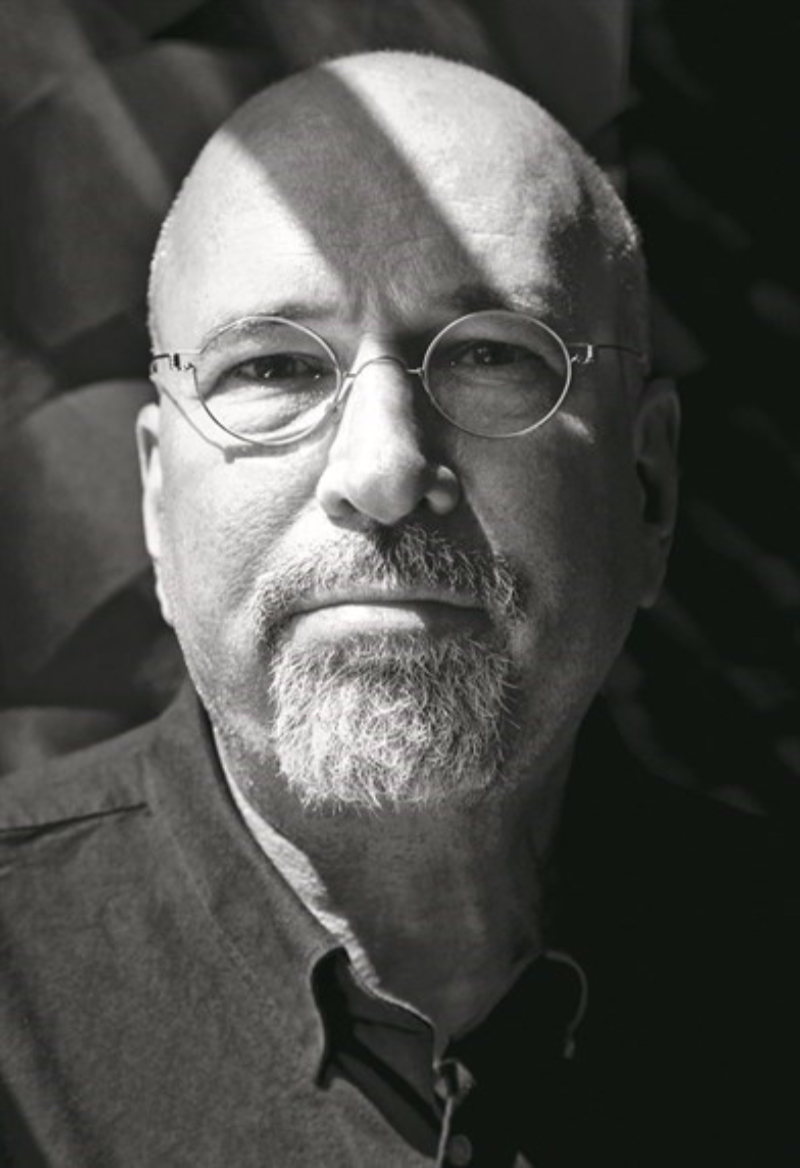
Robert Gober is an American sculptor. His work is often related to domestic and familiar objects such as sinks, doors, and legs.






Lucien Clergue is a French photographer of black and white photography, the first photographer elected a member of the French Academy of Fine Arts.
Lucien Clergue is one of the most famous photographers in France and founder of the annual Arles Festival, which has become the main event in the world of artistic photography, attended by up to 100,000 people. His famous photographic works - modernist black and white studies of female nudes, harlequins, dead animals, gypsies and bullfighting - are considered exemplary of the photographer-artist. Clergue is also known for his friendship with Pablo Picasso, which lasted some 30 years, until the artist's death.


Andreas Bernhard Lyonel Feininger was an American photographer and a writer on photographic technique. He was noted for his dynamic black-and-white scenes of Manhattan and for studies of the structures of natural objects.


Lucien Clergue is a French photographer of black and white photography, the first photographer elected a member of the French Academy of Fine Arts.
Lucien Clergue is one of the most famous photographers in France and founder of the annual Arles Festival, which has become the main event in the world of artistic photography, attended by up to 100,000 people. His famous photographic works - modernist black and white studies of female nudes, harlequins, dead animals, gypsies and bullfighting - are considered exemplary of the photographer-artist. Clergue is also known for his friendship with Pablo Picasso, which lasted some 30 years, until the artist's death.


Arthur (Usher) Fellig, known by his pseudonym Weegee, was a photographer and photojournalist, known for his stark black and white street photography in New York City.
Weegee worked in Manhattan's Lower East Side as a press photographer during the 1930s and 1940s and developed his signature style by following the city's emergency services and documenting their activity. Much of his work depicted unflinchingly realistic scenes of urban life, crime, injury and death. Weegee published photographic books and also worked in cinema, initially making his own short films and later collaborating with film directors such as Jack Donohue and Stanley Kubrick.

